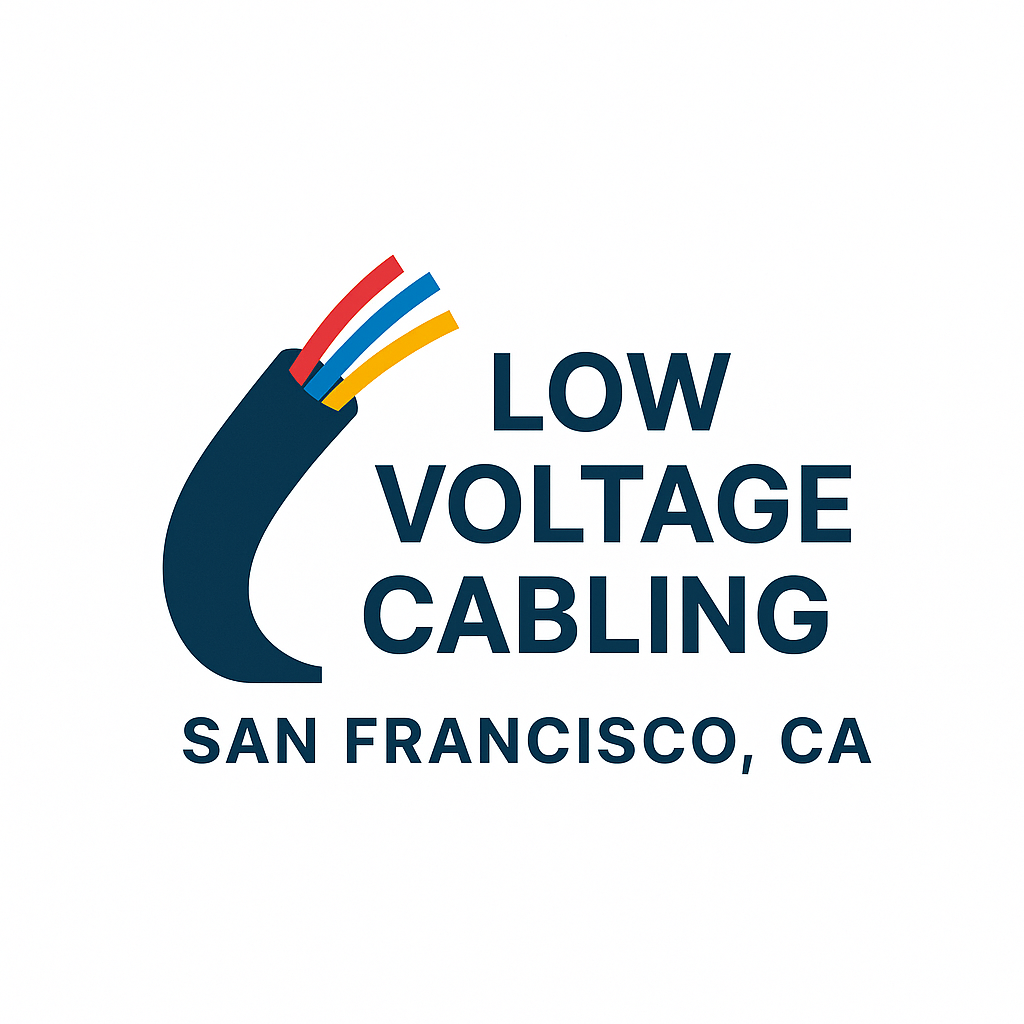Cat5e vs Cat6 Installation in San Francisco, CA: Choosing the Right Network Cable
When deploying network cabling in San Francisco, CA, one of the earliest—and most critical—decisions is whether to use Cat5e or Cat6 cabling. The choice affects performance, future scalability, cost, and compliance with local and national codes. In this article, you will learn:
- The technical differences between Cat5e and Cat6
- How those differences impact real-world installation in San Francisco
- Best practice guidelines and code considerations
- Cost trade-offs and future-proofing
- Advice on selecting the “right” cable for your use case
Whether you’re wiring a small office, retrofitting a historic building, or building a high-performance network, this guide will help you make an informed decision.
Understanding Low Voltage Cabling
Low voltage cabling involves systems that operate under 50 volts, primarily used for network data, audio-visual systems, and security devices. These cables form the backbone of connected technologies—transmitting data without interference or power loss. In San Francisco’s tech-driven economy, efficient low-voltage design ensures smooth operations in offices, schools, and smart homes.
Overview of Cat5e and Cat6 Standards
Cat5e (Category 5 Enhanced)
Cat5e, developed in the early 2000s, supports speeds up to 1 Gigabit per second (Gbps) and bandwidth up to 100 MHz. It’s backward-compatible with Cat5 and suitable for most residential and small office setups.
Cat6 (Category 6)
Cat6 is an upgraded standard designed for high-speed and high-bandwidth performance. It supports up to 10 Gbps speeds at 250 MHz bandwidth, ideal for data-intensive environments such as offices, schools, and large commercial spaces.
Key Differences Between Cat5e and Cat6 Cables
| Feature | Cat5e | Cat6 |
|---|---|---|
| Speed | Up to 1 Gbps | Up to 10 Gbps |
| Bandwidth | 100 MHz | 250 MHz |
| Crosstalk Resistance | Basic | Advanced shielding |
| Distance for Full Speed | 100 meters | 55 meters (10 Gbps) |
| Installation Cost | Lower | Slightly higher |
| Usage | Homes, small offices | High-performance networks |
Performance Comparison: Speed, Bandwidth, and Crosstalk
The biggest advantage of Cat6 over Cat5e lies in speed and interference control. Cat6 cables use tighter twists and internal separators to minimize crosstalk, ensuring a cleaner signal. This makes Cat6 ideal for modern devices and high-traffic networks that demand consistent data transfer speeds.
In contrast, Cat5e performs well for general networking—streaming, web browsing, or small-scale business use—but may struggle with heavy data loads or long cable runs in high-density environments.
Installation Considerations in San Francisco
Installing structured cabling in San Francisco requires compliance with local building codes and electrical safety standards. Due to the region’s dense architecture and seismic regulations, installation must account for:
- Proper cable routing in older or multi-story buildings
- Compliance with California Electrical Code for low voltage systems
- Avoiding electromagnetic interference from nearby power lines
- Environmental durability for coastal weather conditions
Professional installation ensures network reliability and adherence to city inspection requirements.
Cost Analysis: Cat5e vs Cat6
While Cat5e installation is more affordable, typically costing less per foot, Cat6 offers long-term value through better speed and durability. The price difference has narrowed in recent years, making Cat6 the preferred choice for businesses upgrading to future-ready infrastructure.
For most projects in San Francisco, Cat6 installation is a smart investment that balances performance, compliance, and scalability.
Best Use Cases for Each Cable Type
- Cat5e:
- Residential internet and smart TVs
- Small business networks
- Basic VoIP or IP camera systems
- Cat6:
- Data centers and tech offices
- Video conferencing systems
- Cloud-based business operations
- Smart building management
Expert Recommendations for San Francisco Properties
Given the rapid adoption of gigabit internet and cloud-based operations, Cat6 is often the recommended standard for new installations. However, Cat5e remains suitable for smaller spaces or budget-conscious homeowners.
For commercial projects, Cat6A (Augmented Cat6) is also worth considering—it supports 10 Gbps over 100 meters and provides superior shielding in environments with significant interference.
Common Mistakes to Avoid
- Mixing Cat5e and Cat6 cables in the same network
- Poor termination or connector installation
- Running cables near electrical lines without shielding
- Ignoring cable bend radius and tension limits
- Skipping certification testing after installation
Proper testing ensures compliance with TIA/EIA standards and verifies optimal data performance.
Future-Proofing Your Network Infrastructure
As data demands increase, businesses and homeowners in San Francisco should plan for scalability. Upgrading to Cat6 or Cat6A ensures compatibility with future devices and technologies such as Wi-Fi 6, PoE+ (Power over Ethernet Plus), and smart automation systems.
The goal is to invest in infrastructure that supports growth for at least the next decade.
Conclusion
Choosing between Cat5e and Cat6 depends on your network demands, budget, and future scalability goals. For homeowners, Cat5e may provide sufficient speed and reliability. However, for businesses or high-performance networks in San Francisco, Cat6 installation offers the best combination of performance, durability, and future-readiness.
Investing in quality cabling ensures a stable, efficient network infrastructure that supports today’s digital requirements and tomorrow’s innovations.
